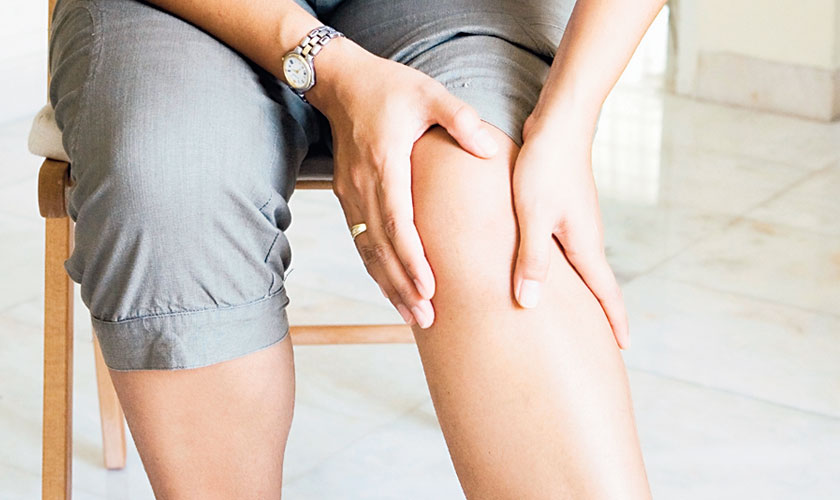Osteoporosis is a growing global problem that respects no boundaries: worldwide, fractures affect one in three women and one in five men over the age of 50.
health
Osteoporosis is a growing global problem that respects no boundaries: worldwide, fractures affect one in three women and one in five men over the age of 50.
Osteoporosis means ‘porous bone’. It is a bone disease that occurs when the body loses too much bone, makes too little bone, or both. As a result, bones become weak and may break from a fall or, in serious cases, from sneezing or minor bumps. It is also called a ‘silent’ disease because bone loss often occurs without you knowing it.
Until about age 30, your body forms enough new bone to replace the bone that is naturally broken down by the body (a process called bone turnover). Your highest bone mass (size and thickness) is reached between ages 20 and 25, and it declines after that. As we age, our bones naturally lose some density and become weaker. That doesn’t mean that every older person gets osteoporosis, but it does mean your chances of developing the disease increase with age. After menopause, however, women begin to lose bone at an even faster rate.
Breaking a bone is a serious complication of osteoporosis, especially with older patients. Osteoporotic bone breaks are most likely to occur in the hip, spine or wrist, but other bones can break too. In addition to causing permanent pain, osteoporosis causes some patients to lose height. When osteoporosis affects vertebrae, or the bones of the spine, it often leads to a stooped or hunched posture.
Osteoporosis may limit mobility, which often leads to feelings of isolation or depression. Additionally, twenty percent of seniors who break a hip die within one year from either complications related to the broken bone itself or the surgery to repair it. Many patients require long-term nursing home care.
It may not be fair, but it’s true: If you’re a woman, you’re automatically at greater risk for osteoporosis than men. Being female puts you at risk of developing osteoporosis and broken bones. Women with lighter, thinner bones are more prone to osteoporosis and hence
about 80% of cases affect women. But it is most likely to occur in women after menopause, because of the sudden decrease in estrogen, the hormone that normally protects against osteoporosis. As the bones become weaker, there is a higher risk of a fracture during a fall or even a fairly minor knock.

Though osteoporosis is more common in women, it is doesn’t have to happen to YOU when you get older. That’s because, osteoporosis can be prevented. Good lifestyle habits can help you protect your bones and decrease your chance of getting osteoporosis. The recipe for bone health is simple.
*It is important to eat a diet rich in calcium and Vitamin D. Calcium is essential for bones, and ensuring an adequate calcium intake is important. Dietary sources are preferable and include: dairy produce, such as milk, cheese, and yogurt, green leafy vegetables, such as kale and broccoli, fish with soft bones, such as tinned salmon and tuna, fortified breakfast cereals. Dairy produce is a good source of calcium and can help prevent osteoporosis.
*Vitamin D plays a key role, as it helps the body absorb calcium. Dietary sources include fortified foods, saltwater fish, and liver. However, most vitamin D does not come from food but from sun exposure, so moderate, regular exposure to sunlight is recommended.
*Exercise helps ward off osteoporosis by strengthening your bones, just as it strengthens your muscles. Strong bones are less likely to fracture. Getting regular weight-bearing exercise, such as walking, as this promotes healthy bone and strengthens support from muscles
*No smoking, as this can reduce the growth of new bone and decrease estrogen levels in women limiting alcohol intake, to encourage healthy bones and prevent falls.
Osteoporosis affects over half of population of our planet aged 50 and above, mostly of whom are women. This condition is responsible for millions of fractures of hips, wrists, lumbar vertebrae and ribs. Aging of bones is a preventable process and World Osteoporosis Day campaign helps people remind about the disease.
World Osteoporosis Day takes place every year on October 20, launching a year-long campaign dedicated to raising global awareness of the prevention, diagnosis and treatment of osteoporosis and metabolic bone disease. Organised by the International Osteoporosis Foundation (IOF) every year, World Osteoporosis Day involves campaigns by national osteoporosis patient societies from around the world with activities in over 90 countries including Pakistan.
The WOD 2017 campaign calls on people of all ages to ‘Love Your Bones: Protect Your Future’! Through early prevention, diagnosis and treatment of osteoporosis, millions of men and women all over the world can reduce their risk of painful, debilitating and life-threatening fractures.
The concept for World Osteoporosis Day started with a campaign launched by the United Kingdom’s National Osteoporosis Society and supported by European Commission on October 20, 1996. Since 1997, the day has been organized by International Osteoporosis Foundation. Every year a different theme is chosen to organize observance. The theme of the day helps draw attention to the problematic issues, that need urgent actions.